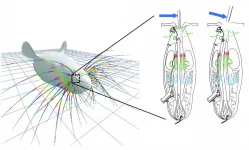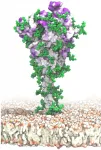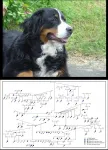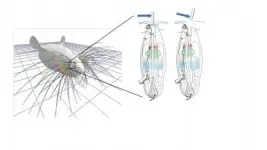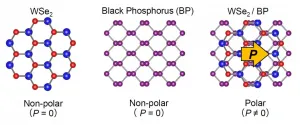Signal detection theory can be used to objectively measure cognitive fatigue
Kessler Foundation research team finds that cognitive fatigue covaries with signal detection theory metrics, providing researchers with new investigative tools
2021-04-01
(Press-News.org) East Hanover, NJ. April 1, 2021. A team of New Jersey researchers has shown that changes in perceptual certainty and response bias, two central metrics of signal detection theory (SDT), correlate with changes in cognitive fatigue. They also show that SDT measures change as a function of changes in brain activation. This finding was reported in Frontiers in Psychology on January 15, 2021, in the open access article "Using Signal Detection Theory to Better Understand Cognitive Fatigue" (doi:10.3389/fpsyg.2020.579188).
The authors are Glenn Wylie, DPhil, Brian Yao, PhD, and John DeLuca, PhD, of Kessler Foundation, and Joshua Sandry, PhD, of Montclair State University.
Cognitive fatigue is a common experience that affects the healthy population as well as individuals with brain injury or neurodegenerative disease. A large body of research shows that subjective feelings of cognitive fatigue do not correlate with performance--that is, a person may experience cognitive fatigue and yet objective measures of their performance, such as their response time or level of accuracy, do not necessarily worsen. As a result, researchers have long lacked an objective behavioral measure that covaries with the subjective experience of fatigue.
While previous research has indicated that one metric of SDT, perceptual certainty, may change as a function of fatigue, it remains unclear whether perceptual certainty covaries with fatigue. Moreover, there has been no research investigating the effect of fatigue on the second key SDT metric, response bias, which is the amount of evidence one requires before releasing a response. Understanding if and how cognitive fatigue covaries with both SDT metrics is essential to the development of effective interventions for people with this condition.
The study was conducted at the Rocco Ortenzio Neuroimaging Center at Kessler Foundation, a specialized facility dedicated solely to rehabilitation research. To investigate cognitive fatigue using SDT, the investigators induced cognitive fatigue in 39 healthy volunteers while acquiring both structural and functional magnetic resonance imaging (fMRI) data. They assessed subjects' cognitive fatigue using a visual analogue scale of fatigue (VAS-F) at baseline and after each of the eight runs of the tasks. This enabled the team to assess whether perceptual certainty and response bias covary with cognitive fatigue, and whether similar patterns of brain activation underlie cognitive fatigue and SDT measures.
Researchers found that both SDT metrics were correlated with changes in cognitive fatigue. As fatigue increased, subjects became more conservative in their response bias and their perceptual certainty declined. This study is the first to show that changes in cognitive fatigue are correlated with changes in perceptual certainty.
Furthermore, the research team found that activation in the striatum of the basal ganglia--an area of the brain Kessler researchers have previously identified as sensitive to changes in cognitive fatigue--was also related to response bias and perceptual certainty.
"Our results show that cognitive fatigue is related to changes in subjects' response bias and perceptual certainty," said lead author Dr. Wylie, director of the Ortenzio Center. "We theorize that as cognitive fatigue increases, subjects make more errors because their perceptual sensitivity declines and they compensate for this by adopting a more conservative response bias," he emphasized. "Our work demonstrates the relevance of SDT measures in the understanding of fatigue and provides researchers with a new set of tools with which to better understand the nature and consequences of cognitive fatigue."
INFORMATION:
Funding: New Jersey Commission for Brain Injury Research (10.005.BIR1) and the National Multiple Sclerosis Society (RG 4232A1/1)
Learn more about ongoing studies at Kessler Foundation at Join Our Research Studies | Kessler Foundation
About Kessler Foundation
Kessler Foundation, a major nonprofit organization in the field of disability, is a global leader in rehabilitation research that improves cognition, mobility and long-term outcomes, including employment, for people with neurological disabilities caused by diseases and injuries of the brain and spinal cord. Kessler Foundation leads the nation in funding innovative programs that expand opportunities for employment for people with disabilities. Learn more by visiting http://www.KesslerFoundation.org
Contact: Carolann Murphy, PA; Cmurphy@KesslerFoundation.org
[Attachments] See images for this press release:

ELSE PRESS RELEASES FROM THIS DATE:
2021-04-01
Researchers have developed a new mechanical model that simulates how whiskers bend within a follicle in response to an external force, paving the way toward better understanding of how whiskers contribute to mammals' sense of touch. Yifu Luo and Mitra Hartmann of Northwestern University and colleagues present these findings in the open-access journal PLOS Computational Biology.
With the exception of some primates, most mammals use whiskers to explore their environment through the sense of touch. Whiskers have no sensors along their length, but when an external force bends ...
2021-04-01
A new, detailed model of the surface of the SARS-CoV-2 spike protein reveals previously unknown vulnerabilities that could inform development of vaccines. Mateusz Sikora of the Max Planck Institute of Biophysics in Frankfurt, Germany, and colleagues present these findings in the open-access journal PLOS Computational Biology.
SARS-CoV-2 is the virus responsible for the COVID-19 pandemic. A key feature of SARS-CoV-2 is its spike protein, which extends from its surface and enables it to target and infect human cells. Extensive research has resulted in detailed static models of the spike protein, but these models do not capture the flexibility of the spike protein itself nor the movements of protective glycans--chains ...
2021-04-01
Six genetic variants add up to determine the risk of several blood cancers in pre-disposed dog breeds, according to a study by Benoît Hédan at the University of Rennes and colleagues, publishing April 8th in the open-access journal PLOS Genetics. The results confirm a known tumour-suppressor gene as a risk factor for histiocytic sarcoma -- a rare and aggressive blood cancer that affects both dogs and humans -- as well as identifying four new genetic loci associated with the disease.
The researchers sequenced genomic DNA extracted from blood samples from Bernese mountain dogs, Rottweilers, flat-coated retrievers, and golden retrievers, including ...
2021-04-01
Memory loss is common after general anesthesia, particularly for events occurring immediately before surgery--a phenomenon called retrograde amnesia. But a new study publishing on April 1st 2021 in the open access journal PLOS Biology, led by Simon Wiegert at the University Medical Center Hamburg-Eppendorf in Germany, shows that changes in the hippocampus--the part of the brain used to make new memories--differ depending on which general anesthetic is used. Consequently, their effects on memory formation also differ.
Understanding how different anesthetics affect the brain, particularly the hippocampus, is therefore important for both clinicians with human patients and experimental scientists who work with animals. Wiegert and his team recorded brain activity from the hippocampus ...
2021-04-01
Achuta Kadambi, an assistant professor at the UCLA Samueli School of Engineering, published a column in the journal Science about how medical devices can be fundamentally biased -- not just in dataset representation as has been widely reported, but from a deeper root: the laws of physics.
Kadambi described how the inherent physics behind medical devices could vary across race and gender. He cited several examples of potential physics-based bias. For example, recent research has shown that a pulse oximeter -- a medical device typically placed on a fingertip that uses infrared and light beams to measure oxygen saturation of the blood and the pulse rate -- is more likely to miss low levels in people with darker skin.
What motivated Kadambi to write this piece stemmed from ...
2021-04-01
A group of scientists from the University of Koblenz-Landau, Germany, has shown that for plants and insects the applied pesticide toxicity in agriculture has substantially increased between 2004 and 2016. In a paper published in the current issue of Science, the authors show that this pattern is even relevant in genetically modified (GM) crops that were originally designed to reduce pesticide impacts on the environment.
"We have taken a large body of pesticide use data from the US and have expressed changes of amounts applied in agriculture over time as changes in total applied pesticide toxicity," says lead author Ralf Schulz, professor for environmental sciences in Landau. "This provides a new view on the potential ...
2021-04-01
We know your cat's whiskers are handsome -- but you can't even see the cool part.
The base of the whisker, which is responsible for sending touch signals to the brain, is hidden inside the follicle, a deep pocket that embeds the whisker within the skin. Because this section of the whisker is obscured, understanding precisely how whiskers communicate touch to the brain has been a longstanding mystery.
In a new study, an interdisciplinary team of researchers at Northwestern University has developed the first mechanical simulation of the whisker inside the follicle. By combining their new model with new anatomical observations, the researchers discovered that when whiskers touch an object, they ...
2021-04-01
For the first time, researchers have discovered a way to obtain polarity and photovoltaic behavior from certain nonphotovoltaic, atomically flat (2D) materials. The key lies in the special way in which the materials are arranged. The resulting effect is different from, and potentially superior to, the photovoltaic effect commonly found in solar cells.
Solar power is considered a key technology in the move away from fossil fuels. Researchers continually innovate more efficient means to generate solar energy. And many of these innovations come from the world of materials research. ...
2021-04-01
Despite a reduction in the total amounts of pesticides used, the toxicity of commonly used pesticides to nontarget species, partially aquatic invertebrates and pollinators, has increased considerably in recent decades, according to a new study analyzing 25 years of pesticide use. This has been driven by the widespread use of highly toxic pyrethroid and neonicotinoid pesticides. The findings challenge claims suggesting that the overall environmental impacts of pesticide use have declined. The impacts of applied pesticides on humans and the environment are often based on comparisons of use rates (e.g., kilograms per hectare) or the total amounts used (e.g., kilograms per year). However, from an environmental perspective, these weight-based ...
2021-04-01
Technology can be biased, and its design can disadvantage certain demographic groups. While efforts to address bias and promote fairness in technologies are rapidly growing in a variety of technical disciplines, Achuta Kadambi argues that similar growth is not occurring fast enough for medical engineering. "Although computer science companies terminate lucrative but biased facial recognition systems, biased medical devices continue to be sold as commercial products," writes Kadambi in a Perspective. Bias in medical devices results in undesirable performance variation across demographic groups and can greatly influence health inequality. For example, optical biosensors that use light to monitor vital signs like blood oxygenation ...
LAST 30 PRESS RELEASES:
[Press-News.org] Signal detection theory can be used to objectively measure cognitive fatigue
Kessler Foundation research team finds that cognitive fatigue covaries with signal detection theory metrics, providing researchers with new investigative tools

